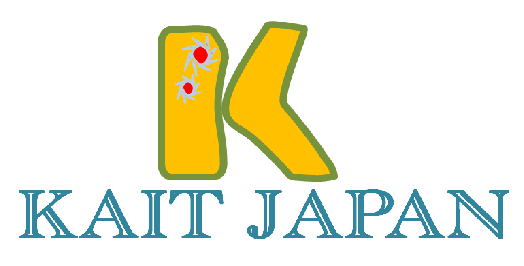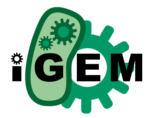Team:KAIT Japan/Project
From 2014.igem.org
| Line 81: | Line 81: | ||
| - | '''<font size="6"> | + | '''<font size="6">・Back graund</font>''' |
| + | <br> | ||
| + | <font size="4">the secondary immune response | ||
| + | As a person's immune system encounters foreign substances (antigens), the components of acquired immunity learn the best way to attack each antigen and begin to develop a memory for that antigen. | ||
| + | As for the immune system, the antigen presenting cell (APC) such as the dendritic cell begins in the place where an antigen is taken in by an endocytosis. | ||
| + | The antigen taken in is broken down to peptide by lysosome. | ||
| + | The antigenic peptides form MHC class Ⅱ molecules which were made in endoplasmic reticulum and a complex and are carried to the cell surface. The T cell Receptor (TcR) of the T cell (CD4 cell) combine with this complex. This becomes the first signal. | ||
| + | Furthermore, CD28 of the CD4 cell combined with B4 of the APC. This becomes the supporting signal, CD4 cell is activated by two signal. | ||
| + | The activated T cell(CD4+ cell) differentiates to Th2 cell by stimulation of interleukin-4(IL-4) called proteins or to Th1 cell by stimulation of IL-12. | ||
| + | Th1 produces IFN-γand IL-2 and lets a macrophage and a killer cell activated and participates in cell-mediated immunity. On the other hand, Th2 produces IL-4, IL-5,IL-10 and lets B cell and a mast cell activated and participates in humoral immunity. | ||
| + | In this way, Th1 and Th2 work important in immunity reaction. | ||
| + | |||
| + | Interaction between Th1 and Th2 | ||
| + | |||
| + | By pathogens and stimulation of immunity, a direction of Th1 predominance or the Th2 predominance is decided, and a kind of the immune response is in this way fixed. | ||
| + | When a virus invades the body, differentiation to Th1 is promoted by Il-12 produced by APC and IFN-γ is produced from Th1 and hits infection defense. At the same time, Th2 is controlled by IFN-γ, and the production of cytokine promoting mast cells and eosinophil work is also controlled . On the other hand, when an antigen invades body, differentiation to Th2 is promoted by IL-4 . Th2 produces IL-4, and activate B cells, and B cells produce an antibody (IgE,IgG). Moreover, Th2 produces IL-5 and promotes eosinophil work. At the same time, Th1 is controlled by IL-4, and the production of cytokine promoting the functin of macrophages is also controlled. | ||
| + | In the way, Th1 and Th2 keep balance mutually , and two cells usually control immune response. (Th1/Th2 balance) | ||
| + | When this balance collapses and became the Th2 predominance, IL-5 is secreted excessively from Th2, and eosonophil and mast cells are activated. And than after that inflammatory materials such as histamine or leukotriene are secreted excessively by テthose cells when an antigen is connected in those cells that an antibody bound to through Fc receptor (FcR). This inflammatory material and antibody produced excessively are related to allergic reactions. | ||
| + | The allergic reactions are classified in type Ⅰto Ⅳ ,and not only these reactions occur independently, but also some types may be taking place at the same time. | ||
| + | Above all, type Ⅰ reactions is said immediate hypersensitivity, and time to onset is short.Examples of this allergic reaction include bronchial asthma and atopic dermatitis | ||
| + | There are the people suffering by these allergic diseases. | ||
| + | Therefore, we thought that we kept Th1/Th2 balance normally by increasing IL-12 which participated in Th1 cytodifferentiation and restrained allergic reactions.</font> | ||
Revision as of 07:43, 16 October 2014
|
|
|
|
|
|
|
|
|
Project
・Abstract
Interaction between Th1 and Th2 By pathogens and stimulation of immunity, a direction of Th1 predominance or the Th2 predominance is decided, and a kind of the immune response is in this way fixed. When a virus invades the body, differentiation to Th1 is promoted by Il-12 produced by APC and IFN-γ is produced from Th1 and hits infection defense. At the same time, Th2 is controlled by IFN-γ, and the production of cytokine promoting mast cells and eosinophil work is also controlled . On the other hand, when an antigen invades body, differentiation to Th2 is promoted by IL-4 . Th2 produces IL-4, and activate B cells, and B cells produce an antibody (IgE,IgG). Moreover, Th2 produces IL-5 and promotes eosinophil work. At the same time, Th1 is controlled by IL-4, and the production of cytokine promoting the functin of macrophages is also controlled. In the way, Th1 and Th2 keep balance mutually , and two cells usually control immune response. (Th1/Th2 balance) When this balance collapses and became the Th2 predominance, IL-5 is secreted excessively from Th2, and eosonophil and mast cells are activated. And than after that inflammatory materials such as histamine or leukotriene are secreted excessively by テthose cells when an antigen is connected in those cells that an antibody bound to through Fc receptor (FcR). This inflammatory material and antibody produced excessively are related to allergic reactions. The allergic reactions are classified in type Ⅰto Ⅳ ,and not only these reactions occur independently, but also some types may be taking place at the same time. Above all, type Ⅰ reactions is said immediate hypersensitivity, and time to onset is short.Examples of this allergic reaction include bronchial asthma and atopic dermatitis There are the people suffering by these allergic diseases. Therefore, we thought that we kept Th1/Th2 balance normally by increasing IL-12 which participated in Th1 cytodifferentiation and restrained allergic reactions. |
 "
"











